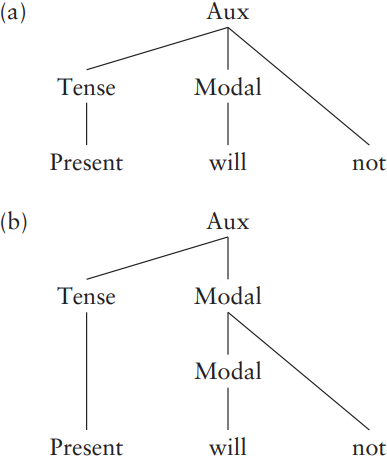

Grammar


Tenses


Present

Present Simple

Present Continuous

Present Perfect

Present Perfect Continuous


Past

Past Simple

Past Continuous

Past Perfect

Past Perfect Continuous


Future

Future Simple

Future Continuous

Future Perfect

Future Perfect Continuous


Parts Of Speech


Nouns

Countable and uncountable nouns

Verbal nouns

Singular and Plural nouns

Proper nouns

Nouns gender

Nouns definition

Concrete nouns

Abstract nouns

Common nouns

Collective nouns

Definition Of Nouns

Animate and Inanimate nouns

Nouns


Verbs

Stative and dynamic verbs

Finite and nonfinite verbs

To be verbs

Transitive and intransitive verbs

Auxiliary verbs

Modal verbs

Regular and irregular verbs

Action verbs

Verbs


Adverbs

Relative adverbs

Interrogative adverbs

Adverbs of time

Adverbs of place

Adverbs of reason

Adverbs of quantity

Adverbs of manner

Adverbs of frequency

Adverbs of affirmation

Adverbs


Adjectives

Quantitative adjective

Proper adjective

Possessive adjective

Numeral adjective

Interrogative adjective

Distributive adjective

Descriptive adjective

Demonstrative adjective


Pronouns

Subject pronoun

Relative pronoun

Reflexive pronoun

Reciprocal pronoun

Possessive pronoun

Personal pronoun

Interrogative pronoun

Indefinite pronoun

Emphatic pronoun

Distributive pronoun

Demonstrative pronoun

Pronouns


Pre Position


Preposition by function

Time preposition

Reason preposition

Possession preposition

Place preposition

Phrases preposition

Origin preposition

Measure preposition

Direction preposition

Contrast preposition

Agent preposition


Preposition by construction

Simple preposition

Phrase preposition

Double preposition

Compound preposition

prepositions


Conjunctions

Subordinating conjunction

Correlative conjunction

Coordinating conjunction

Conjunctive adverbs

conjunctions


Interjections

Express calling interjection

Phrases

Sentences


Grammar Rules

Passive and Active

Preference

Requests and offers

wishes

Be used to

Some and any

Could have done

Describing people

Giving advices

Possession

Comparative and superlative

Giving Reason

Making Suggestions

Apologizing

Forming questions

Since and for

Directions

Obligation

Adverbials

invitation

Articles

Imaginary condition

Zero conditional

First conditional

Second conditional

Third conditional

Reported speech

Demonstratives

Determiners


Linguistics

Phonetics

Phonology

Linguistics fields

Syntax

Morphology

Semantics

pragmatics

History

Writing

Grammar

Phonetics and Phonology

Semiotics


Reading Comprehension

Elementary

Intermediate

Advanced


Teaching Methods

Teaching Strategies

Assessment
adjunction (n.)
المؤلف:
David Crystal
المصدر:
A dictionary of linguistics and phonetics
الجزء والصفحة:
11-1
2023-07-15
1774
adjunction (n.)
A basic SYNTACTIC operation in TRANSFORMATIONAL GRAMMAR (TG) referring to a RULE which places certain ELEMENTS of STRUCTURE in adjacent positions, with the aim of specifying how these structures fit together in larger units. In classical TG, several types of adjunction were recognized. In sister-adjunction two elements were formally adjoined under a particular NODE and thus became sister CONSTITUENTS of that node. For example, in one formulation of the VERB PHRASE, the NEGATIVE PARTICLE was ‘sister-adjoined’ to the elements MODAL and TENSE, as in (a) below. (A different, but related, formal operation was known as daughter-adjunction.) Chomsky-adjunction provided an alternative way of handling this situation, and is now the only type of adjunction recognized in GOVERNMENT-BINDING THEORY. This suggestion involves adjoining an element to a node: a COPY of this node is then made immediately above it, as in (b) below. Each of the nodes in Chomskyan adjunction structure is called a ‘segment’, and the two together are called a ‘category’. In (b), each of the Modals is a segment, and the category Modal is a combination of the two. A category can, but a segment cannot, DOMINATE. This ensures that whatever happens to modal will also happens to not – for instance, CONTRACTED not (n’t) needs to stay with the modal if the latter is moved, as in won’t he, can’t he, etc. It is thus claimed that this operation allows LINGUISTICALLY SIGNIFICANT GENERALIZATIONS to be made which might otherwise be missed, or which would be handled less ECONOMICALLY. In government-binding theory, MOVEMENT rules involve either (Chomsky-) adjunction or SUBSTITUTION.

 الاكثر قراءة في Syntax
الاكثر قراءة في Syntax
 اخر الاخبار
اخر الاخبار
اخبار العتبة العباسية المقدسة

الآخبار الصحية















 قسم الشؤون الفكرية يصدر كتاباً يوثق تاريخ السدانة في العتبة العباسية المقدسة
قسم الشؤون الفكرية يصدر كتاباً يوثق تاريخ السدانة في العتبة العباسية المقدسة "المهمة".. إصدار قصصي يوثّق القصص الفائزة في مسابقة فتوى الدفاع المقدسة للقصة القصيرة
"المهمة".. إصدار قصصي يوثّق القصص الفائزة في مسابقة فتوى الدفاع المقدسة للقصة القصيرة (نوافذ).. إصدار أدبي يوثق القصص الفائزة في مسابقة الإمام العسكري (عليه السلام)
(نوافذ).. إصدار أدبي يوثق القصص الفائزة في مسابقة الإمام العسكري (عليه السلام)


















